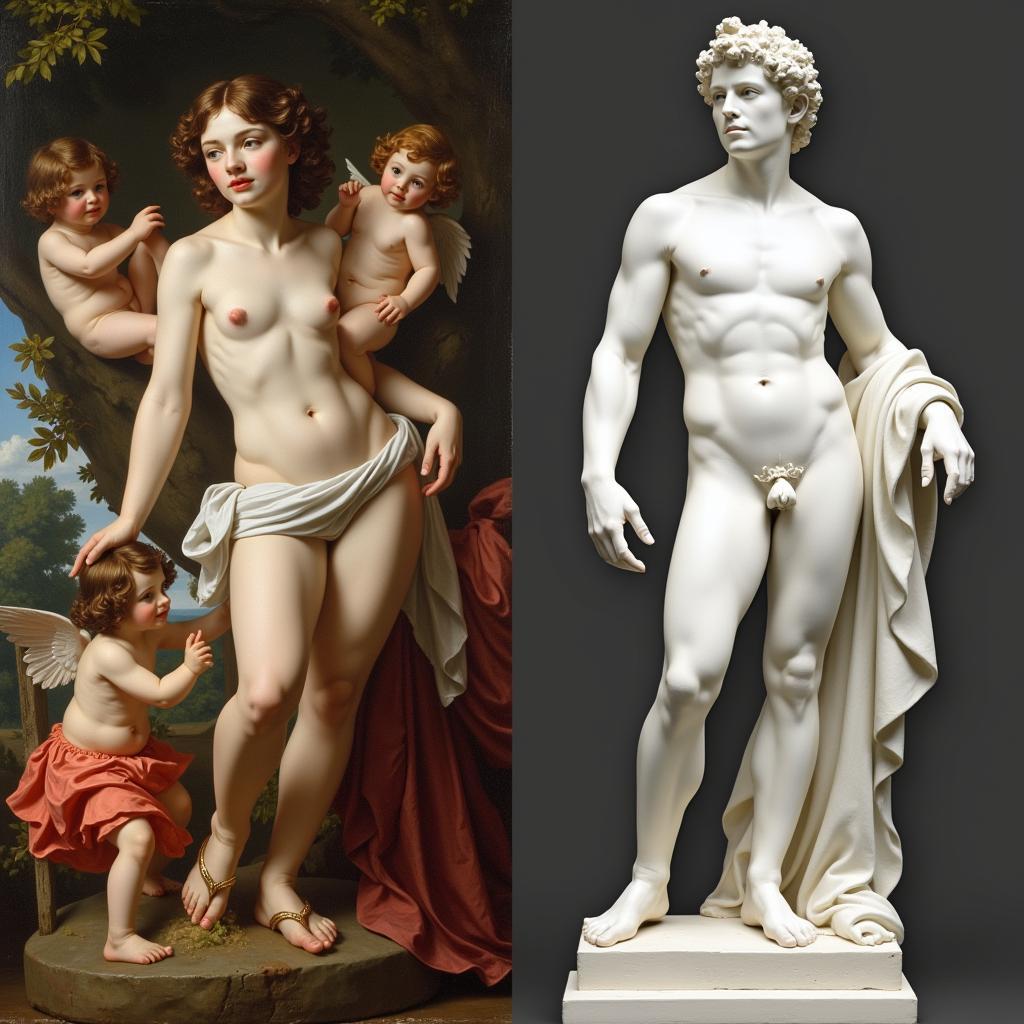Unveiling the Art of the Batman
The “Art Of The Batman”, a phrase echoing through comic book history and spilling into the mainstream, signifies more than just captivating visuals. It embodies the essence of the Dark Knight, encompassing everything from the gritty, noir-inspired illustrations of his earliest appearances to the sleek, technologically advanced depictions of modern interpretations. This exploration delves into the evolution, impact, and enduring legacy of Batman’s artistic representation.
The Genesis: From Pulp to Icon
Batman’s visual identity, born in the late 1930s amidst the burgeoning popularity of pulp magazines and detective comics, borrowed heavily from the era’s fascination with masked vigilantes and gothic aesthetics. Bob Kane, the artist credited with Batman’s creation, drew inspiration from figures like Zorro and The Shadow, blending their archetypes with elements of bat-like imagery. The result? A brooding figure, cloaked in shadows, striking fear into the hearts of criminals.
Early depictions of Batman, while lacking the finesse of later iterations, possessed a raw energy and dynamism that resonated with readers. His initial costume, a simple bat-like cowl with a scalloped cape, established the blueprint for the iconic silhouette we recognize today. However, it was the collaborative efforts of artists like Jerry Robinson and Bill Finger that truly solidified Batman’s visual identity. Robinson’s refinements to the cowl, introducing the elongated ears and streamlined mask, added a sense of mystery and intimidation. Meanwhile, Finger’s contributions extended beyond visuals, shaping Batman’s origin story, personality, and the very world he inhabited.
Evolution of an Icon: Reflecting Societal Shifts
As decades passed, Batman’s appearance evolved, mirroring changing artistic sensibilities and reflecting the socio-political climate of each era. The campy aesthetics of the 1960s saw a more vibrant, almost comical, portrayal of the Caped Crusader, while the gritty realism of the 1980s ushered in a darker, more brooding Batman, grappling with inner demons and the harsh realities of urban decay.
The late 20th and early 21st centuries witnessed a surge in artistic experimentation, with creators pushing the boundaries of visual storytelling. Artists like Frank Miller, with his seminal work “The Dark Knight Returns,” redefined Batman for a new generation, presenting an aged, yet still formidable, hero battling against societal decay and his own mortality. This period also saw the rise of influential artists like Jim Lee and Alex Ross, who further refined Batman’s physique and costume, emphasizing his physical prowess and imposing presence.
Beyond the Panels: Art of the Batman in Other Media
The influence of Batman’s visual identity extends far beyond the printed page. From live-action films and animated series to video games and merchandise, the art of the Batman has permeated popular culture, shaping how audiences perceive and engage with the character.
Tim Burton’s 1989 film, with its gothic architecture and atmospheric cinematography, offered a visually stunning interpretation of Gotham City, perfectly complementing Michael Keaton’s brooding performance as the Caped Crusader. The animated series “Batman: The Animated Series,” with its striking Art Deco-inspired visuals and nuanced character designs, remains a high watermark in Batman’s artistic representation.
More recently, video games like the “Arkham” series have embraced a cinematic approach to visuals, rendering Batman and his world in stunning detail, blurring the lines between interactive entertainment and art. The “art of the Batman” has also transcended its original medium, inspiring countless artists and designers across various disciplines, from fashion and graphic design to fine art and sculpture.
The Enduring Appeal: A Canvas for Exploration
What makes the “art of the Batman” so enduringly fascinating? Perhaps it’s the character’s inherent duality, his ability to embody both darkness and hope, vulnerability and strength. This complexity provides artists with a rich tapestry to explore, allowing them to project their own interpretations onto the character and his world.
Or maybe it’s the timeless appeal of Gotham City itself, a sprawling metropolis teeming with corruption, where gothic architecture casts long shadows and the line between good and evil blurs. Gotham serves as a powerful backdrop for Batman’s crusade, a visual representation of the societal ills he fights against.
Whatever the reason, the “art of the Batman” continues to captivate, inspire, and challenge audiences worldwide. It’s a testament to the enduring power of visual storytelling and the enduring legacy of a character who has transcended the realm of comics to become a cultural icon.
FAQ
1. Who are some of the most influential artists in Batman’s history?
Some of the most influential artists in Batman’s history include Bob Kane, Jerry Robinson, Bill Finger, Dick Sprang, Neal Adams, Frank Miller, Jim Lee, and Alex Ross.
2. How has Batman’s costume evolved over the years?
Batman’s costume has undergone numerous changes over the years, reflecting evolving artistic styles and technological advancements. While the core elements remain consistent (the cowl, cape, and bat symbol), details like the length of the ears, the shape of the bat symbol, and the material of the costume have been reimagined countless times.
3. Where can I find artwork from different Batman comics and media?
Artwork from various Batman comics and media can be found online through websites like Comic Art Fans, Heritage Auctions, and DeviantArt. You can also find art books dedicated to specific artists or eras of Batman’s history.
Need Help?
For any inquiries or assistance, feel free to reach out to us:
Phone: 02462573573
Email: danteum@gmail.com
Address: Savico Megamall, 7-9 Đ. Nguyễn Văn Linh, Gia Thụy, Long Biên, Hà Nội 10000, Việt Nam
Our customer support team is available 24/7 to assist you.

